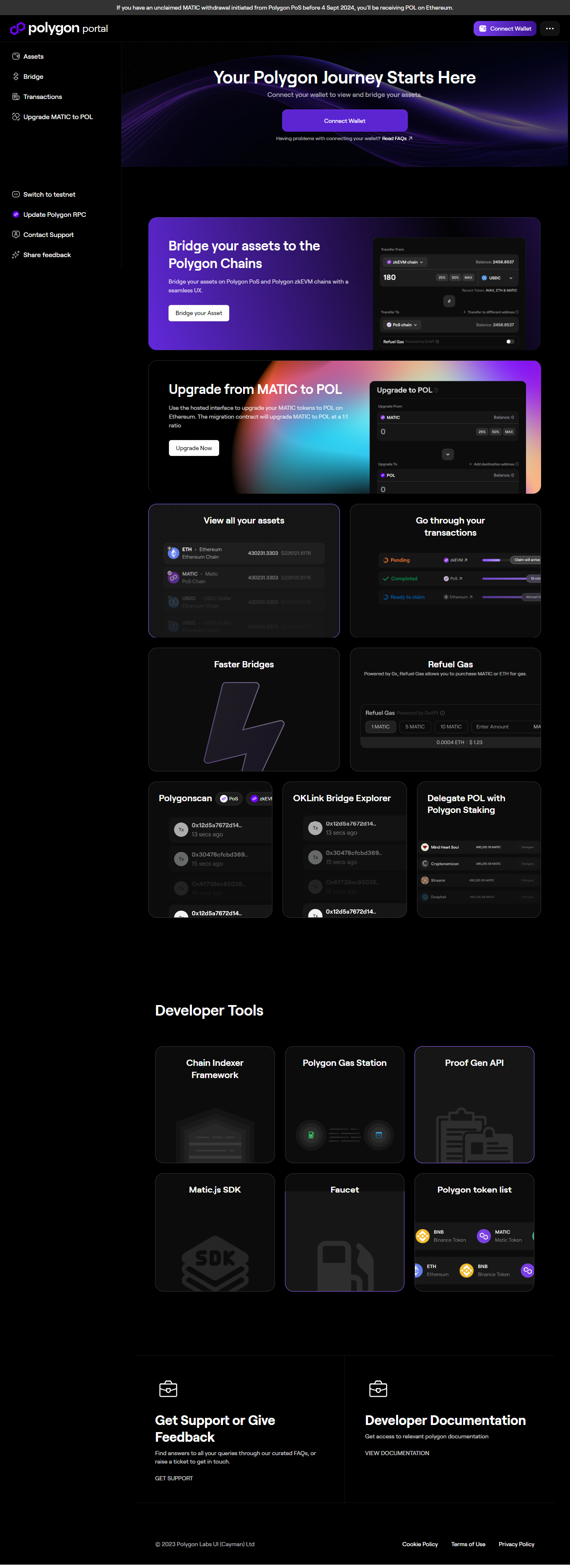

Polygon Wallet is gaining popularity as the cryptocurrency world looks for faster, cheaper, and more efficient blockchain solutions. As a layer-2 scaling solution for Ethereum, Polygon has garnered attention for its ability to enhance the Ethereum network's scalability and transaction speed, while significantly reducing fees. This guide dives into what a Polygon Wallet is, its advantages, how to set one up, and how it connects to the larger decentralized finance (DeFi) ecosystem.
A Polygon Wallet is a digital wallet designed to store, manage, and transact cryptocurrencies on the Polygon network. It facilitates easy interaction with decentralized applications (dApps) and allows users to manage tokens, such as MATIC (Polygon’s native cryptocurrency), and other ERC-20 tokens supported by the Polygon network.
Unlike traditional wallets, Polygon Wallets enable faster and cheaper transactions due to the Polygon network’s optimized infrastructure. It addresses Ethereum’s scaling issues, reducing congestion and high gas fees. This is especially useful for DeFi enthusiasts and developers who require swift transactions without paying exorbitant fees.
There are several reasons why Polygon Wallets are preferred by cryptocurrency users and developers alike:
Low Transaction Fees: One of the most significant advantages of Polygon Wallets is their drastically reduced transaction fees compared to Ethereum. This makes it ideal for users transacting frequently or engaging with DeFi protocols where multiple transactions are necessary.
High Scalability: By operating as a layer-2 solution, Polygon offers higher scalability, which means the network can handle more transactions per second. This contributes to a more seamless user experience with faster transaction confirmation times.
Ethereum Compatibility: Although Polygon is a separate network, it is built to be fully compatible with Ethereum. This means assets can be easily transferred between the Ethereum and Polygon networks using a bridge, such as the Polygon Bridge. This interoperability enhances its usability and appeal.
Security: Polygon Wallets operate on a secure framework supported by the Ethereum mainnet. This makes it as secure as using Ethereum wallets while benefiting from lower costs and faster processing times.
Access to dApps: With a Polygon Wallet, users can easily interact with dApps in the DeFi ecosystem, providing access to decentralized exchanges (DEXs), lending platforms, staking opportunities, and more.
Setting up a Polygon Wallet is simple and can be done through several trusted platforms. Here’s a step-by-step guide:
Choose a Wallet Provider: There are several popular wallet providers that support Polygon, including MetaMask, Trust Wallet, and Coinbase Wallet. Each of these offers easy integration with the Polygon network. You can check out this guide on setting up MetaMask with Polygon for detailed instructions.
Install the Wallet: Download and install your chosen wallet provider’s app or browser extension. MetaMask, for example, is available as a browser extension or mobile app.
Configure for Polygon Network: After installation, configure the wallet to connect with the Polygon network. For MetaMask, this involves adding the Polygon network manually by entering the network details.
Fund Your Wallet: Once configured, you can fund your wallet by transferring MATIC or any other ERC-20 tokens from an exchange like Binance or Coinbase. Be sure to use the Polygon network when transferring assets to avoid unnecessary Ethereum gas fees.
Start Using: After funding your wallet, you can begin interacting with dApps, staking, or transferring tokens.
A key feature of using a Polygon Wallet is the ability to move assets between Ethereum and Polygon via the Polygon Bridge. The bridge allows users to deposit ERC-20 tokens into Polygon, where they can benefit from lower transaction fees, and then withdraw them back to Ethereum when needed. To use the bridge, users simply access the Polygon Web Wallet and follow the instructions to move assets between chains.
The versatility of a Polygon Wallet is enhanced by its compatibility with numerous third-party platforms. DeFi platforms like Aave and SushiSwap have integrated with Polygon, enabling users to lend, borrow, and trade assets at lower costs. In addition, OpenSea, the leading NFT marketplace, supports NFTs minted on Polygon, allowing for low-cost minting and trading. You can explore the full list of dApps compatible with Polygon here.
A Polygon Wallet offers users a fast, secure, and cost-effective way to manage their digital assets, making it an excellent choice for those involved in DeFi, dApps, or frequent cryptocurrency transactions. By leveraging the low fees and high scalability of the Polygon network, users can enjoy a more efficient experience while maintaining Ethereum’s robust security features. With easy setup options and third-party integrations, a Polygon Wallet provides seamless access to the future of decentralized finance.